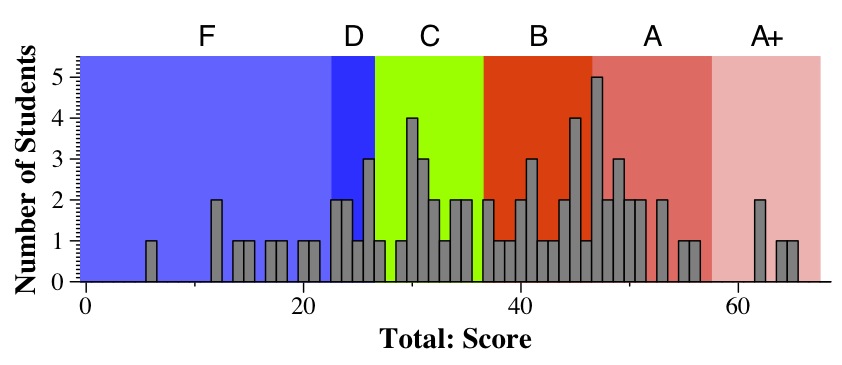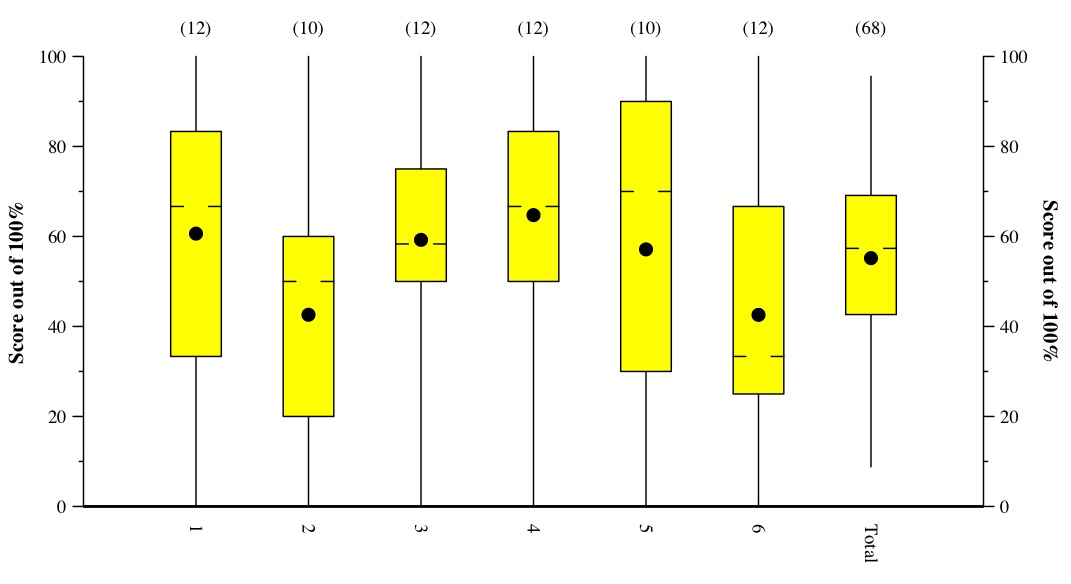
I talked about Question 6 in class. A student wrote me a well-worded email explaining why he thought the question was not fair, and he made some good points for which I am to blame. To wit, I should have stated my intentions for you to focus on the iterators and vectors and not waste your time looking for typos or other things that would cause compiler errors. I should have given you a strategy for solving this problem, so that you didn't pour over 18 test cases in detail, but instead looked for trends. I apologized for that in class, and apologize here. That said, I went over the strategy for solving the problem in class, and it's in the answers too -- please see the grading guide for more analysis of this question.
Here's my view of letter grades for this test. The A student, in my opinion, would get the following scores for each question: 9, 8, 9, 9, 7, 5. That's where I set the A mark. The rest of the letter grades are as follows:

Please see My final grading guide for CS302 for description of how the midterm affects the final grade. In particular, with this midterm, I will consider the top grade to be 58 (so those four students will have more than 100% on the exam).
